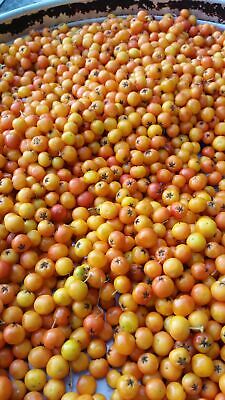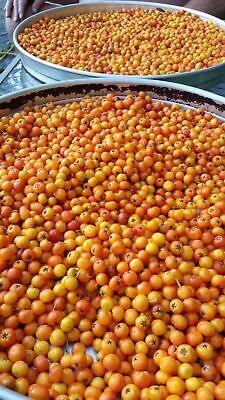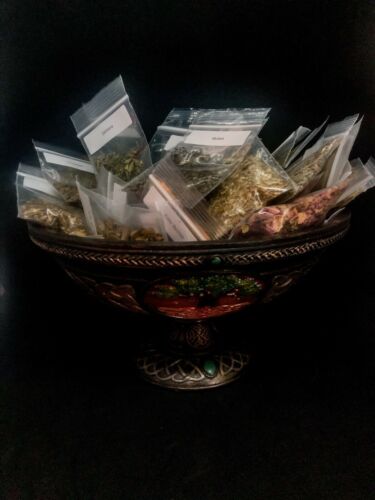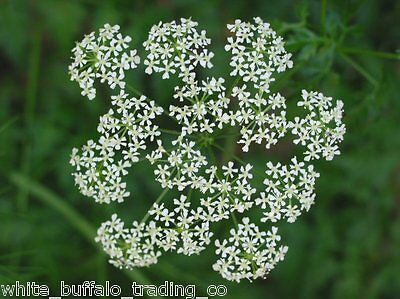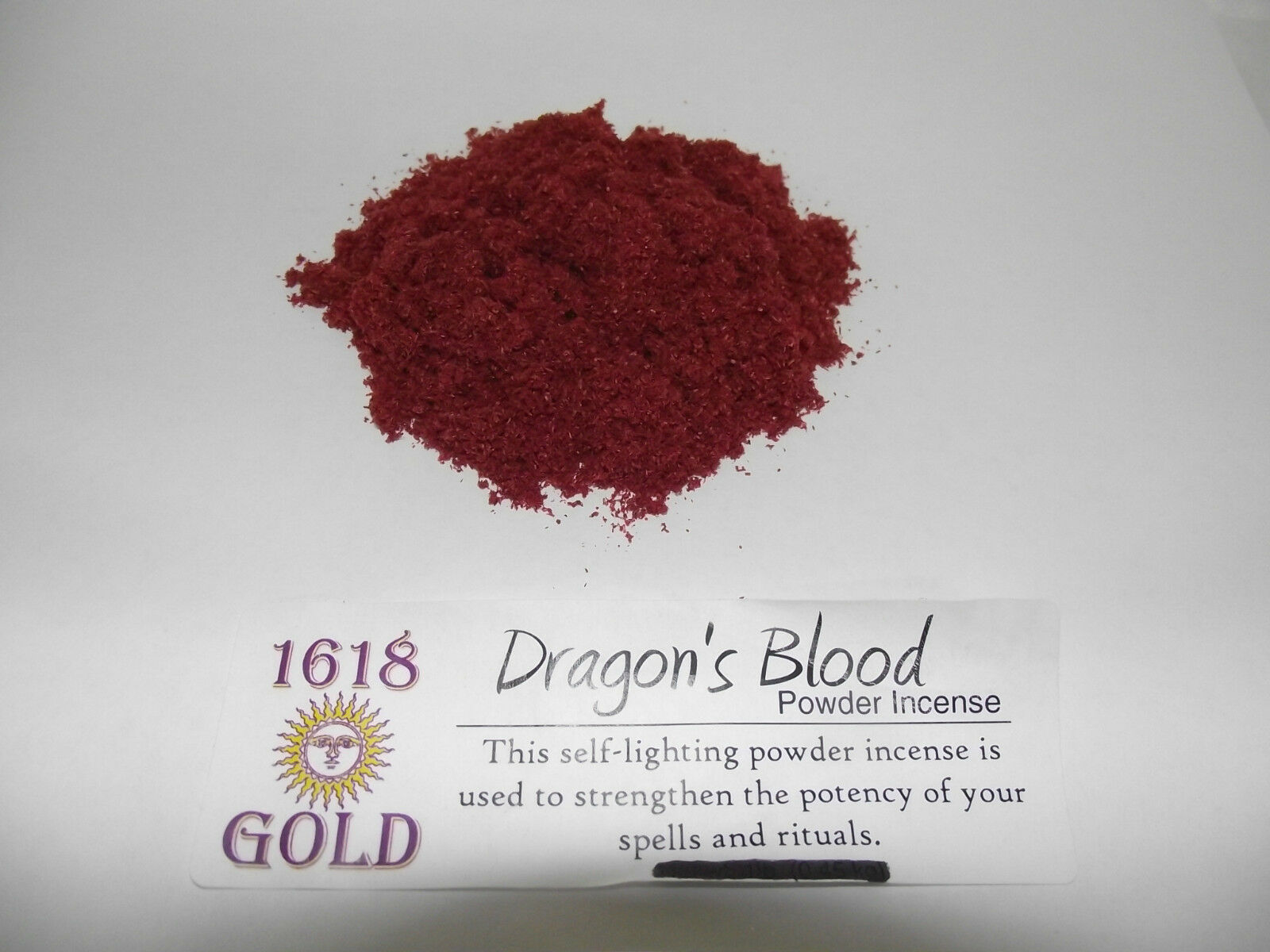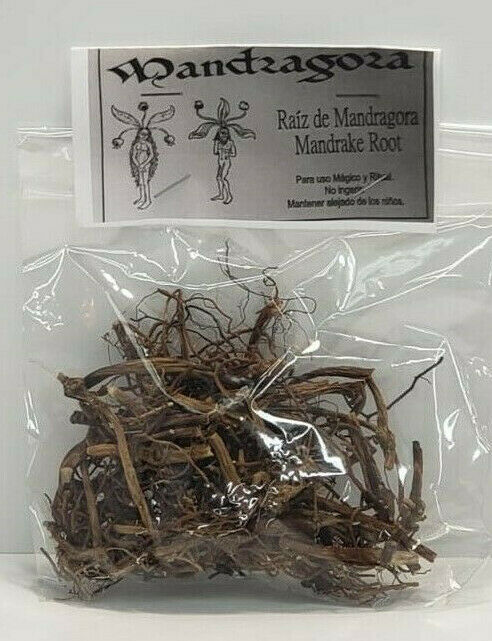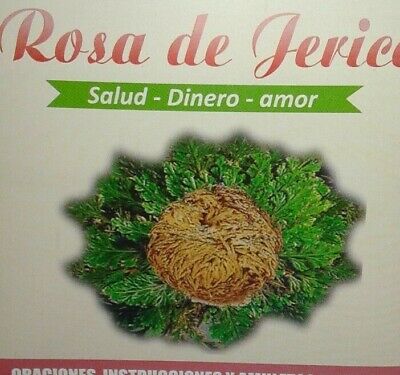-40%
ROWAN BERRIES WHOLE ORGANIC .25 oz
$ 0.79
- Description
- Size Guide
Description
Rowan berries;Rowan Berry Jelly - a great preserve for breakfast, afternoon tea or to serve with roast lamb
The Rowan is also known as the witchen tree, witchwood and witchbane.
The Rowan is a small deciduous tree, growing up to 30 feet in height. A species of the rose family, it can live for upwards of 200 years, and as its branches rarely die, it keeps its graceful shape for the duration if its life
In ancient times the rowan was referred to as the Tree of Life. Greek legend tells us that the birth of the rowan was precipitated by Hebe, daughter of Zeus and Hera, a youth Goddess who had the power to make the old young again. Hebe was cup bearer to the Gods, and lost Zeus's cup to a demon. The Gods sent an eagle to recover the cop, and in the ensuing battle, wherever a drop of blood or an eagle feather fell to earth, there grew a rowan tree. This is believed to be why the rowan has feathery leaves and berries like drops of blood.
In Scandinavian legend, the first woman was born from a rowan tree, and the first man from an ash tree. A rowan tree is believed to have saved the life of Thor, by bending over a river in which he was being swept to his death, and helping him back onto land.
In Icelandic myth, the rowan is particularly strong at the Winter Solstice. When it is bare of foliage and covered in frost, it appears to be covered in stars, expressing the outpouring of the spirit in the darkest part of the year. The myth of the star-dressed rowan possibly evolved from an ancient tradition of erecting moon-trees, covered with fruit and lights, and crowned with a crescent moon. A special star is said to glow atop these moon-trees, heralding the rebirth of light; this star was incorporated into Christian lore, and the star-clad rowan is thought to be a forerunner of the Christmas tree.
The red berries of the rowan tree have ensured that it is held in high esteem by many pagan traditions, for red food has been traditionally seen as food of the Gods. Many legends attribute magical properties to rowan berries - the Irish 'Quicken tree of Dubhous' was said to bear berries which could transform a man of 100 to 30 years of age, if three were eaten, and another Irish legend tells of a rowan whose berries could sustain one with the strength of nine meals. This tree was said to be guarded by a dragon. In yet another Irish tradition, corpses were staked with a rowan branch bearing red berries, in order to keep the ghost from wandering, and ensure that it passes comfortably to its new abode.
Rowan is under the influence of the Sun, and is strongly associated with Brigid, poetess and muse (this association is especially evident when the rowan's berries attract songbirds in Autumn). Brigid also rules over spinning and weaving, and traditionally spindles and spinning wheels are made of rowan wood. She traditionally carries a flaming arrow made of rowan wood, which is aimed into the sky at Imbolc, and represents the course of the sun in the heavens, as it arcs towards the height of summer, and then falls to earth in autumn, and disappears into the horizon in winter.
In Scotland, the cross-beams of chimneys were often made of rowan wood, which was seen to be protective, and on the Solstices and Equinoxes, rowan sticks were laid across the lintels to reinforce beneficial influences.
Power, Success, Protection, Healing, Psychic Powers
Combine shipping
for multiple items add items to cart and request an invoice for combined shipping
